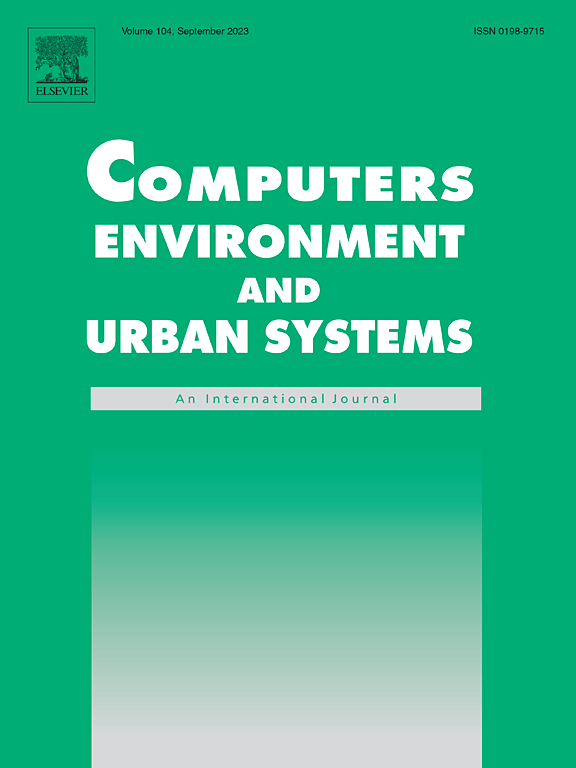城市规划的生成式人工智能:通过扩散模型合成卫星图像
IF 8.3
1区 地球科学
Q1 ENVIRONMENTAL STUDIES
Computers Environment and Urban Systems
Pub Date : 2025-09-04
DOI:10.1016/j.compenvurbsys.2025.102339
引用次数: 0
摘要
生成式人工智能通过生成特定场地的城市布局和实现灵活的设计探索,为自动化城市规划提供了新的机会。然而,现有的方法往往难以产生大规模的现实和实用的设计。因此,我们采用了最先进的稳定扩散模型,并扩展了ControlNet,以生成基于土地使用描述、基础设施和自然环境的高保真卫星图像。为了克服数据可用性的限制,我们将卫星图像与OpenStreetMap的结构化土地利用和约束信息在空间上联系起来。利用美国三个主要城市的数据,我们证明了所提出的扩散模型通过不同的土地利用配置、道路网络和水体产生了现实和多样化的城市景观,促进了跨城市的学习和设计多样性。我们还系统地评估了不同语言提示和控制图像对卫星图像生成质量的影响。我们的模型获得了很高的FID和KID分数,并在不同的城市环境中表现出稳健性。来自城市规划者和公众的定性评估表明,生成的图像与设计描述和约束条件密切相关,并且通常比真实图像更受欢迎。这项工作为控制城市图像生成建立了基准,并突出了生成式人工智能作为加强规划工作流程和公众参与的工具的潜力。本文章由计算机程序翻译,如有差异,请以英文原文为准。
Generative AI for urban planning: Synthesizing satellite imagery via diffusion models
Generative AI offers new opportunities for automating urban planning by producing site specific urban layouts and enabling flexible design exploration. However, existing approaches often struggle to produce realistic and practical designs at scale. Therefore, we adapt a state-of-the-art stable diffusion model, extended with ControlNet, to generate high-fidelity satellite imagery conditioned on land use descriptions, infrastructure, and natural environments. To overcome data availability limitations, we spatially link satellite imagery with structured land use and constraint information from OpenStreetMap. Using data from three major U.S. cities, we demonstrate that the proposed diffusion model generates realistic and diverse urban landscapes by varying land-use configurations, road networks, and water bodies, facilitating cross-city learning and design diversity. We also systematically evaluate the impacts of varying language prompts and control imagery on the quality of satellite imagery generation. Our model achieves high FID and KID scores and demonstrates robustness across diverse urban contexts. Qualitative assessments from urban planners and the general public show that generated images align closely with design descriptions and constraints, and are often preferred over real images. This work establishes a benchmark for controlled urban imagery generation and highlights the potential of generative AI as a tool for enhancing planning workflows and public engagement.
求助全文
通过发布文献求助,成功后即可免费获取论文全文。
去求助
来源期刊

Computers Environment and Urban Systems
Multiple-
CiteScore
13.30
自引率
7.40%
发文量
111
审稿时长
32 days
期刊介绍:
Computers, Environment and Urban Systemsis an interdisciplinary journal publishing cutting-edge and innovative computer-based research on environmental and urban systems, that privileges the geospatial perspective. The journal welcomes original high quality scholarship of a theoretical, applied or technological nature, and provides a stimulating presentation of perspectives, research developments, overviews of important new technologies and uses of major computational, information-based, and visualization innovations. Applied and theoretical contributions demonstrate the scope of computer-based analysis fostering a better understanding of environmental and urban systems, their spatial scope and their dynamics.
 求助内容:
求助内容: 应助结果提醒方式:
应助结果提醒方式:


